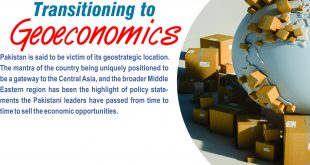A well-structured de-radicalisation strategy should be formed by a combination of various factors.
While the proceedings of a three-day seminar covered multiple aspects of the radicalisation phenomenon, its major thrust was centred on working out holistic de-radicalisation strategy through incorporation of the world best practices in the light of local needs, experiences and challenges. The mushroom growth of extremism and radicalisation is a global fact, which has been fuelled by deepening socio-economic disparities, lack of economic and educational opportunities, centralisation of decision-making processes and weak governance structures. These factors provide conducive environment for radical tendencies to become rampant. Therefore, any strategy evolved to counter the radical mindset needs to be aware of these variables.
Speaking on the occasion, General tion alone is not the solution to terrorism and extremism. He said that people were the mainstay of the armed forces and that the armed forces are answerable to people and parliament. This contention of the army chief has dispelled all impressions about any ‘supposed dichotomy of views’ between the civilian government and the establishment. This appeared to be a carefully designed message for the international community that all elements of national power enjoyed consensus on issues of vital importance to the country. The Prime Minister’s stance that the establishment was supportive of the political process stood vindicated.
At a time when the US has shifted its policy from ‘deployment of huge armies’ overseas to the use of ‘strategic assets’ to dilute the terrorist threat with Pakistan likely to be target of accelerated drone strike, there are all indications that a review of the country’s priorities is underway within the strategic community of Pakistan. There is now an increasing acceptance of exploring more durable, long-term non-military solution to the raging issues. What would supplement this effort is the presence of effective civilian administrative structures to efficiently mange areas cleared by the military. Without putting such strong structures in place, the efforts are not expected to bear fruit.
A well-structured de-radicalisation strategy should be informed by a combination of various factors. Some points are instructive in this regard:
As rightly pointed out by the Prime Minister, an effective counter-insurgency and de-radicalisation strategy cannot succeed unless it is worked out in consultation with all the stakeholders. Unity within the broad set of mainstream opinion is a way forward to secure the country’s long-term interests and rehabilitate the extremist elements.
With the drawdown plan announced by President Obama, Pakistan must brace itself for graver challenges ahead. The US administration has made no bones about its determination to carry out unilateral surgical strikes if Pakistan did not fully ‘cooperate’. There is also a strong possibility of increased drone strikes on the Pakistani side of the border. The situation poses serious challenges to the country’s national security. The US, which is opposed to Pakistan reaching out to Taliban, is already in talks with its leadership at different levels under its ‘outreach program’. Coming in tandem with these developments is the statement by the Indian Prime Minister that Pakistan should ‘leave Kashmir alone’ and focus on its internal problems further complicates the situation.
This is no doubt an extraordinary situation, which demands of all elements of state power, and political parties to forge unity and find lasting solutions to the country’s problems by crafting consensus. The seminar on de-radicalisation is a good beginning. It is hoped that its recommendations would be incorporated in the national counter-insurgency strategy.
 Jahangir's World Times First Comprehensive Magazine for students/teachers of competitive exams and general readers as well.
Jahangir's World Times First Comprehensive Magazine for students/teachers of competitive exams and general readers as well.


